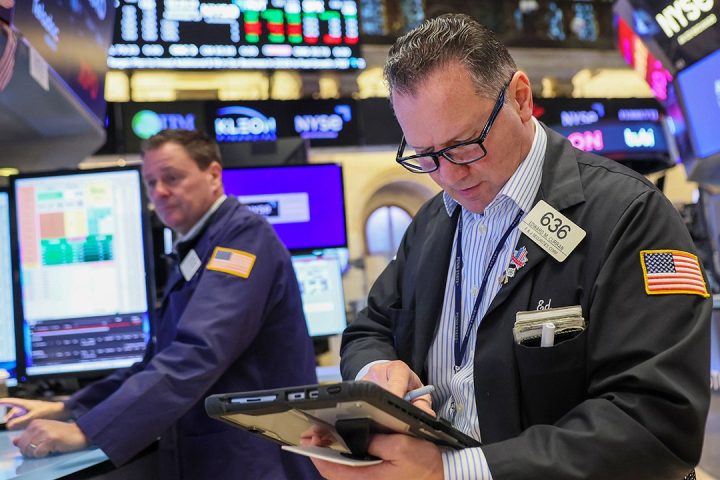Arion Herbert and his wife, Erica, started their recreational sports-league business in 2016. What started off as a way to gather friends and family outdoors quickly turned into a league with players and teams from all around Charlotte, N.C.
The company, called Main Attraction Recreational Sports or “MARS,” has since grown to making close to $500,000 in annual revenue, and Herbert said he believes the success is, in part, due to generative artificial-intelligence tools.
Herbert hired assistance through the online freelance marketplace Fiverr to create AI-generated marketing materials for their events. He said the use of AI marketing has helped MARS stand out and attract more customers than when they were merely relying on word-of-mouth marketing and a homemade logo.
“It’s a no-brainer for us,” he said.
Approximately 23% of small businesses in the U.S. are using AI technology to produce goods and services, according to a recent survey carried out by the U.S. Chamber of Commerce.
Researchers typically define AI as computer systems and software able to perform tasks normally requiring human intelligence, like decision-making, speech recognition, and language processing.
Small businesses that have taken the leap and are now experimenting with AI tools — like MARS, which used a freelancer to specifically create marketing materials using AI image-generation tools — are learning that it’s helping them complete tasks that they wouldn’t otherwise be able to afford.
The freelancer hired by Herbert’s company to create images used text-to-image AI tools like Microsoft Bing’s
MSFT,
image creator and Midjourney. These have helped Herbert save money. Images that cost $50 would have previously cost the company $250 to create.
“It’s low risk, high reward because the prices that we pay for this content are so feasible in terms of what you would spend to get content like this created [by a human],” Herbert said.
Roughly 60% of small businesses in the U.S. that currently use AI in their marketing say they have saved time, with 33% estimating that they save more than 40 minutes per week on marketing by using AI, according to an August 2023 survey of 486 small-business decision-makers by Constant Contact, a small business-focused digital-marketing platform. More than 25% of those respondents expect AI to save them at least $5,000 over the next 12 months.
A challenging business environment
But as the cost of labor, rent and raw materials have risen — along with interest rates — it’s been a tough time for tech companies more broadly that provide services to small- and medium-sized businesses. It’s made it all the more critical for small businesses to find cheaper alternatives to traditional business-to-business services.
Paycom, a payroll services software company, saw its stock decline more than 37% year-to-date with lower-than-expected revenue growth. Bill, a software company that automates back-office financial services “powered by artificial intelligence,” has seen its shares plummet over 35% year-to-date.
Bill’s Chief Financial Officer John Rettig said, in a recent earnings call, that their business is “operating in an environment of increasing economic choppiness and small businesses are under increasing pressure to adjust to the current realities.”
ZoomInfo, which helps sales and marketing teams track leads and customers, has also seen shares decline over 45% year-to-date, with CFO Cameron Hyzer telling analysts that it’s a “tough world out there”.
ZoomInfo, Bill, and Paycom did not respond to requests for comment.
Macroeconomic challenges, however, haven’t stopped some small-business owners from experimenting with AI tools in an effort to grow their businesses faster and, hopefully, with lower costs.
AI as an office assistant
Marsha Guerrier, founder and CEO of HerSuiteSpot, a Long Island, N.Y., boutique consulting firm and digital platform for women in business, said she relies on generative AI programs for several day-to-day tasks.
“It has been a game changer for me,” she said.
She uses it to generate newsletters, and even to help her respond to emails with potential business partners. Guerrier currently pays $20 a month for ChatGPT, and also hired an AI freelancer to help her learn how to use AI prompts.
AI prompts are natural-language commands used as inputs in AI programs to get a desired result. The more specific and well-formed a prompt, the more useful the result. For example, asking ChatGPT to “come up with topics for a newsletter for women in business” might not display as useful as a result as asking it to “come up with topics for an email newsletter for women in business interested in starting their own company with no seed money.”
“In our newsletter we share articles on a subject that is important to entrepreneurs,” said Guerrier. “AI helps me create content ideas for the newsletter based on trending topics that are relevant and important to women of color entrepreneurs.”
Currently, her small business annually brings in $50,000 in revenue, approximately $5,000 of which she sets aside to allocate to AI services. In order to keep a lid on costs and because she’s still experimenting with the technology, Guerrier tries not to spend more than 10% of the expected revenue of a project on AI, she said.
Guerrier says that there are also challenges that arise with using AI tools — answers aren’t always accurate, and can be misleading.
“I say do your research. You know, don’t trust the data, but use it as a tool,” she said. “I didn’t always get it right. And the one thing that I strongly believe, and it’s something that I talk about all the time, is that AI is only as smart as the people that are using it right now.”
While Guerrier isn’t able to measure the exact return on her investment yet, other businesses have seen immediate results.
Fiesta Texas Pawn, an independently-owned pawn shop in Arlington, Texas, began offering designer handbags, thanks to a subscription to Entrupy, a handbag-authentication software that uses machine learning to scan thousands of images of a handbag to verify authenticity.
Carey Delaney, the store manager, says he pays a subscription fee of $119 a month to scan five handbags, with additional costs for each handbag after that. Since starting to use the service in 2019, handbag revenue has increased “well over 1,000%,” he told MarketWatch. The store didn’t offer many handbags before this tool became available because it was too expensive to authenticate every handbag individually.
Breakthroughs in generative AI could potentially drive a 7% — or close to $7 trillion — increase in global GDP and increase productivity growth by 1.5 percentage points over the next decade, according to a Goldman Sachs estimate. Research from Forrester predicts that 2.4 million jobs in the U.S. are expected to be replaced by generative AI by 2030.
For many small-business owners, AI tools provide a service in lieu of a human employee, which could come at a higher cost.
Herbert, who owns the recreational-sports league business, compares AI to a virtual assistant. “I would certainly encourage small-business owners to look and lean on AI as another employee,” he said.
Read the full article here







